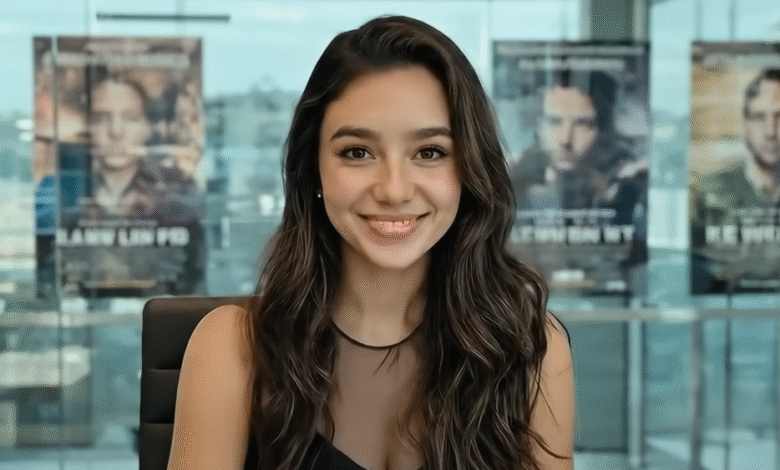AI Actress Tilly Norwood: Hollywood Threat or Publicity Stunt?

▼ Summary
– Eline Van der Velden’s casual mention of signing an AI character named Tilly Norwood with an agency sparked a global backlash at the Zurich Film Festival.
– The reaction to Tilly Norwood reflects industry tension and crystallizes Hollywood’s fears about AI, reminiscent of concerns during the 2023 strikes.
– Van der Velden has a history of creating work focused on human discomfort, using satire to hold up a mirror to society, which aligns with the Tilly project’s intent.
– Critics and industry figures view the idea of agencies representing AI characters as a betrayal, fearing it undermines human creatives and their job security.
– Despite advancements in AI tools, experts note that creating quality content still requires significant human talent and labor, and AI is not an immediate threat to Hollywood jobs.
The emergence of Tilly Norwood, an entirely AI-generated actress, has ignited fierce debate across Hollywood and beyond. Eline Van der Velden, founder of the production company Particle6, casually revealed plans to secure agency representation for this digital creation during a Zurich Film Festival panel. That single remark, paired with Tilly’s ingenue-like appearance, unleashed a torrent of global reactions ranging from outrage and anxiety to fascination and even inappropriate speculation.
According to Bryn Mooser, founder of the AI film studio Asteria, the intense response itself tells a story. He suggests it signals a deeply tense and uncertain period within the entertainment industry. For many in Hollywood, Tilly embodies long-simmering fears about artificial intelligence, anxieties that previously fueled major industry strikes. Over the last two years, the rapid advancement of video AI models, including newly released tools, has spurred the growth of dozens of specialized AI studios. These small, agile teams are now competing to produce the first genuine AI-driven commercial hit.
Particle6, established in 2015, has spent the last three years transforming into an AI-focused production house. Van der Velden’s background is in sketch comedy and YouTube content, where a recurring theme in her work has been exploring human discomfort. In a previous online persona, she conducted provocative street interviews reminiscent of Sacha Baron Cohen’s style, once convincing strangers to share a kiss before horrifying them by spitting into a glass and asking them to drink from it. The intense backlash from her viral stunts eventually pushed her to move behind the camera.
Addressing the controversy on Instagram, Van der Velden framed the creation of Tilly as an act of imagination and craftsmanship. She described her work as using satire to hold a mirror up to society, implying this project is a continuation of that mission. She declined to comment further for this story through a publicist. If the objective was indeed to make people uncomfortable, then it has certainly been achieved.
However, the concept of a synthetic character is not new. Virtual influencer Miquela, for instance, was signed by a major talent agency years ago. What made the idea of an “AI actress” being represented in 2025 feel like a betrayal to many is the perceived role of agents. They are traditionally seen as allies for human creatives in negotiations with powerful studios, so this move felt like a defensive line was crumbling.
Tricia Biggio, CEO of AI animation studio Invisible Universe, believes this is the core of the public trigger. The notion of agents representing AI-generated entities as clients strikes many as outrageous. While major studios are actively exploring AI for visual effects and pre-production efficiency, they show no current interest in casting AI talent. Their contracts with the actors’ union require them to disclose any plans to use synthetic performers, and so far, none have done so.
Mooser is quick to reassure, stating that Tilly Norwood is not coming for anyone’s job anytime soon in a major Hollywood film. He dismisses the image of a studio executive scheming to replace actors with dollar-per-creation digital counterparts. True innovation is more likely to emerge from smaller companies experimenting with accessible tools, but a significant quality gap remains between their output and a polished studio production. Even creating short AI videos demands considerable creative effort and human skill.
Rachel Joy Victor of AI consultancy FBRC.AI points out that the current AI models still have major limitations. She emphasizes that the new talent emerging to bridge the gap between AI potential and professional results is, unequivocally, human talent. For many artists, AI is simply another tool to expand their creative possibilities. Alex Naghavi, an AI artist, sees it as a way to produce and share stories more rapidly, focusing on achieving a unique and original style rather than mimicking established studios like Pixar.
Within the AI content community itself, the announcement was widely viewed as a deliberately provocative stunt. Invisible Universe, for example, has its own digital character, Qai Qai, who creates music and has a record deal, without causing similar uproar. Biggio suggests that the fury stems from a misunderstanding; many people likely don’t realize this is probably a hype-building maneuver, and secondly, it does not pose the immediate threat to livelihoods that they fear.
(Source: Variety)